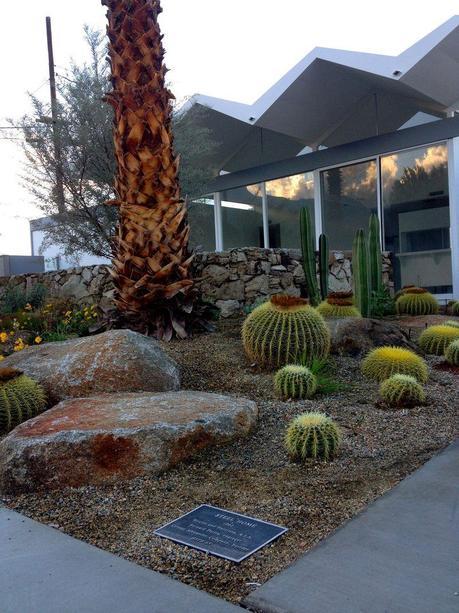As many Minnesotans decide to do in their retirement, my dad and stepmom have become snowbirds. First, they retired to the cabin, then they bought a camper-trailer to facilitate wandering about the country during the colder months. Last year, they discovered Palm Springs, an area which immediately resonated with them, and they bought a little place they’ve since christened Casa Andé. Unlike the previous several winters, this year their whereabouts are generally fixed, so I decided to schedule a visit to see their new digs and experience this community they’ve come to rave about.
Here’s one of the first things you learn about Palm Springs when you start to do the research: Midcentury modern architecture is a big deal in this particular area of the country. Nestled into the Coachella Valley between the San Bernadino Mountains and the Salton Sea, and precariously straddling the San Andreas fault, Palm Springs is reputed to have the largest concentration of midcentury modern homes in the country.
Midcentury modern and the desert landscape here combined to become Desert Modernism. And it’s really no wonder, when you look around the place—desert valley with scrub and sage and sand and wind—you see how naturally it lends itself to this architectural style, which embodies clean, sweeping lines, bright colors, a sense of the out-of-doors extending inside. Palm Springs Modern Tours describes the movement this way:
The buildings that resulted were new and original. They reflected and enhanced the stark beauty of their desert environments. They featured honest materials such as glass, wood, steel, stone and concrete that were both beautiful and essential. They assumed an integral role in the aesthetic space between sand, mountain and sky, and they expressed an understated sense of style that replaced ostentation with the inherent drama of quality design.
Donald Wexler is one of the better-known architects who designed and built for the majority of his career (nearly six decades!) in Palm Springs. His body of work includes El Rancho Vista Estates (1960), Alexander steel houses (1962), Dinah Shore House and Dinah Shore-Maurice Smith House (1964), Palm Springs Airport (1966), Desert Water Agency (1978), and Larson Justice Center (1996), and many more houses, commercial buildings, and schools—many built in innovative, prefab steel construction.

This Wexler Steel House (identified by a placard), located at 290 East Simms Rd., is currently for sale.
The Palm Springs Visitor’s Center and the Palm Springs Architecture Design Center offer a map of the area’s notable Modernist structures, including a small, unassuming cluster of Wexler homes near the intersection of San Rafael Road and N. Indian Canyon Drive. One house, at 290 E. Simms Road, happened to be for sale, and further investigation online revealed photographic views of the home, as well as insight on the valuation of a well-restored, architecturally significant 1,500-square-foot home on the north end of Palm Springs (listed at $895,000).
While Wexler’s designs—just like the snowbirds we all know and love—weren’t cut out for frigid Minnesota winters, the architect does have a strong connection to the Midwest, having grown up in South Dakota, and graduated from the University of Minnesota in 1950.
To learn more about Donald Wexler and Desert Modernism, plan a trip to Palm Springs mid-February for Modernism Week, or visit the following sites:
- Palm Springs Life Magazine, The Quiet Elegance of Donald Wexler
- T Magazine, Seeing Things: Donald Wexler, Desert Modernist
- Curbed National, Dwell on Design: Sunday Morning
Angela Anderson: Realtor and Modernist Homes Geek
Results Support Services: Email / 612-396-3654
Licensed Associate Working with Sharlene Hensrud of RE/MAX Results, and HomesMSP — Sharlene, John, Angela
RELATED ARTICLES:
- “Luster on Steel,” aka Lustron Houses in the Twin Cities
- Mid-Century Modern Home Tour... and how to create your own if you are buying
- Where to Find Mid-Century Modern Homes in the Twin Cities

